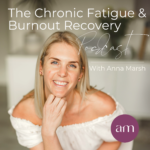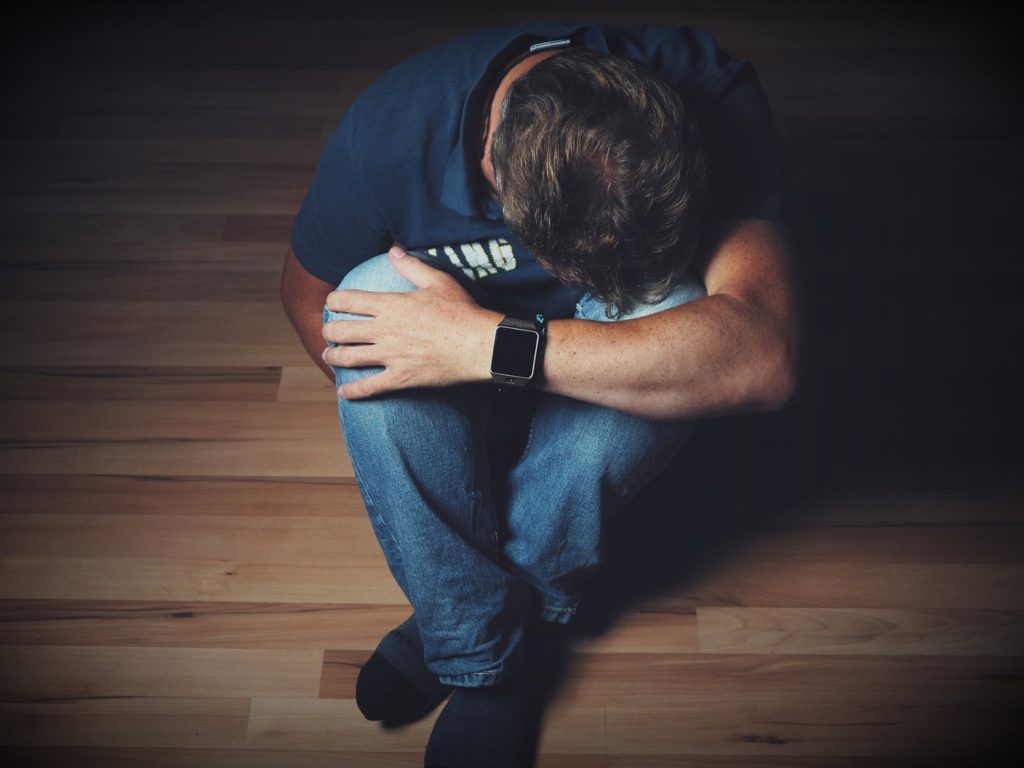
Shownotes
However frustrating they may be, crashes, flares and setbacks are part of the fatigue recovery process. In this episode Anna explains what is happening in the body during a crash or flare and how you can support your body the move through them as quickly as possible.
Useful links:
Website: https://annamarsh.co.uk/
Instagram: https://www.instagram.com/anna_marsh_nutrition/
Fatigue Recovery Quiz: https://app.annamarsh.co.uk/quiz
How to Manage Crashes, Flares and Set Backs
Welcome back to the chronic fatigue and burnout recovery podcast. I am your host Anna Marsh, and today we’re going to talk about a very popular topic: how to manage crashes and flares. So if you are somebody who is recovering from chronic fatigue syndrome, long COVID, if you’ve got pods, fibromyalgia, burnout or some other complex, chronic condition, which affects your energy and perhaps leads to energy crashes from time to time, I’m sure you will know the absolute frustration or hopelessness, anger, and everything else in between comes hand in hand with a setback, a crash or a flare.
I’d like to pre-frame this episode by saying that crashes, flares, and setbacks are an inevitable part of the process. We would love for progress to be linear, but you and I both know that that is seldom the case, maybe never really ever the case in any aspect of life. Whatever goal you’re looking to achieve, whether that is healing and recovering your health, or maybe achieving something in your business or achieving something on a personal level, there are always going to be ups and downs, and those ups and downs are part of the journey.
They are necessary but don’t always feel good steps, which help us learn what we need to learn so that we can eventually realise our goal, whatever that goal is. Although crashes, players and setbacks are frustrating, the attitude I’d love for you to come away from this episode with is that they are your greatest teachers, they will bring to you the best lessons and these lessons will shape you and help you to become the person you need to be to achieve your goals. One of my favourite sayings is, “Achieve something you’ve never achieved before.
You must become someone you’ve never been.” This implies that there is an identity shift, and I would also probably say that not only is there an identity shift, but there is a shift on the systemic level of your nervous system. Your entire nervous system must shift so you can be the person you need to be to realise your goal.
Through the lessons we learn from our crashes off layers and setbacks, we can start to become aware of our blind spots and learn our edges, which is too much for the body at this stage. And if we embrace these lessons or the learning opportunities offered, we can take the actions required to reshape our thinking, the nervous system, and how we approach and practice self-care and healing. If you’re in a crash right now, and you’re listening to this, and you’re feeling all of the emotions, I know, I’ve been there too, and I don’t want to invalidate any of that emotional experience.
But I want to encourage you to know that this is not permanent and that there will be good things that come from the learning if you can take the opportunity to learn from this experience you’re having right now. As I’ve said already, as we experienced crashes, what we’re doing is we’re learning our edges. I remember when I first became fully unwell and began what I call, I guess, my healing adventure or my chronic fatigue experience, I had no awareness of what I was doing.
I was probably on a weekly basis experiencing the typical boom and crash cycles. Feeling a little bit better, then going on to do too much, then having a bit of a crash, maybe needing to spend a day or two in bed and then feeling a little bit better, and then going on to repeat the whole cycle all over again. Honestly, it took me a long time to see what was happening.
I was constantly going through these cycles because I was still in a denial stage in my healing journey, where I thought I could heal faster than I actually could. I would first say that I was doing it mindlessly while repeating these boom and crash cycles. I was all consumed by frustration.

And my inner achiever was completely hijacking and project managing the process, and all she wanted to see was progress, progress, progress, progress. It wasn’t until I started to slow down a bit and connect more to my body and understand what was going on that I began to see the cycle that I was in, and then I started to refine the process. Part of that process was learning what is too much and what I need to do to support my body.
And making a few adjustments, seeing a little progress, then having another setback, another crash and then having to reevaluate maybe or learn a new lesson, implement that, and then continue forward little bits at a time. When I speak with my clients in this chronic fatigue recovery journey, they say, “Oh, no, I’m feeling so awful. I’m so close with myself, I had another crash, or I don’t know why this has happened.”
The first question I always ask is, “Is it as bad as crashes that you’ve had before? And do you feel that you’re recovering from this crash setback or flare faster than you did before? The progress or what we’re looking for is the milestone to assess progress.
Should I say we don’t necessarily need to eliminate crashes and setbacks? But we want to see that they are starting to reduce in their frequency and they’re starting to reduce in their intensity. For example, at the beginning of my journey, I would have a big crash once a week, where I would feel a bit bound.
Of course, I could have gotten up to do things or left the house if I had used a lot of push energy. But there was no real desire or motivation to do any of those things. Maybe once a week, I entered that cycle where I would feel awful and want to lay in bed all day.
But then, as time went on, maybe I would still experience a weekly sort of cycle of doing too much but the crash days, shall we call them, meant that I felt a bit rubbish. But I could still work, I could still maybe go for like a little short walk. There were manageable, more manageable within the context of my life and then, as time went on, I could have weeks where I genuinely felt pretty good.
Then the setbacks or crashes were more cyclical with my menstrual cycle. So typically feel a little bit lower, but still functional, around my period, the first couple weeks of my cycle, pretty good, and the second half of my cycle. As time went on, those cycles became less intense.
The highs and lows were not as high and not as low, and then things just gradually started to even out. So understand that it’s not a case of being on it or feeling good all the time. Even healthy people have cycles of doing too much and needing to step back.
Life is about yin and yang. It’s about the balance between pushing ourselves and then resting and recovering. I think if you have a very strong inner achiever, I know I do, sometimes we can see, or we can perceive these setbacks or crashes like we’re failing.
We’re not failing; what we’re doing is learning, and we can move forward from this information. I gave an example of how there was a pattern in the way that my body responded to my menstrual cycles. I could use that information and say, “Hmm, something is happening here.
There’s a cyclical pattern here that’s associated with my hormones. What can I do here to even this out a little bit more?” And then I started adding in fighter estrogens, it Emami beans, sesame, and flaxseed, around about the time and my cycle when I would usually experience that crash.
Then I noticed I don’t get as many headaches now, and my energy is much more stable. So there are little things that we can do from these learning experiences, which are then constantly refining our self-care routines. We want to think about this kind of anti-hustle culture.
We’ve got this sort of toxic capitalism mindset that’s probably embedded in all of us where we need to be hustling, we need to be always on, we need to be achieving, and it’s very, very tempting to apply that to our healing. But healing must come with a softer, gentler, more compassionate attitude. We want to bring that to healing in general, and we want to bring that when we are in the midst of a crash or a flare because it’s very easy to be judgmental about why we’re experiencing what we’re experiencing.
That can stop how quickly we overcome the crash or the flare. There are many reasons why crashes or flares happen. Mostly, it’s because we’ve done too much or the body is experiencing too much.
That could be just too much physically; you tried to exercise, and then you were building it up, and then it was just too much for your body, and your body shut down. Or maybe there are some intense emotional experiences you’re having right now due to life’s complexities, and that’s just too much for your nervous system. Or it could be that you’re trying to heal too fast.

For example, you’re on a gut protocol, doing a detox, doing some deep emotional work, and your body is like, “Whoa, lady, you need to slow down a little bit.” So maybe we’re just again learning that the inner achiever hijacks our healing journey a little bit too much. There can be many reasons why we crash.
I also mentioned that I would notice trends in my hormonal cycle. But sometimes, there will also be no apparent reason. That’s sometimes the hardest to accept because often, the mind likes to have the answers; the mind likes to cling to certainty.
Often, if we can pinpoint something, “Oh, it’s because of this.” You already feel better because we have a rationale and an explanation. And the mind likes that. It’s hard to accept when we don’t know why it happened. We’ve just got to make our way through it and hope to feel better again.
I appreciate that there will also be times when there’s just no rhyme or reason to why you feel the way that you do, and to a certain extent, this is part of life, just accepting. Sometimes we don’t always get what we want, which is an answer in this case. But I’d love to go along and talk a little bit about what is happening in the body and how we support the body in this time.
When you’ve reached this point of a crash, flare, or setback, and I sort of have already said the words shut down as you’ve done too much. Your body is overwhelmed, and it’s just gone into a shutdown; there will be immune activation, and the body will go into more of an inflammatory state. That means that energy is being prioritised towards the immune system, away from the brain and the metabolic system, and that’s why you can feel the way you do.
And hand in hand, because the immune system and the nervous system are so closely linked, there will be nervous system activation. I guess the very act of experiencing a crash, probably for many people, feels like more of a freeze. So freeze, immobility, shutdown, dissociation, but remember that there is sympathetic activation underneath the freeze.
The freeze contains that fight-or-flight energy. Sometimes we have no energy, we feel very wiped out, we feel like we need to rest, but then when we go down and rest, it feels like our heart is pounding in our chest, and there’s just loads of energy in the body, but at the same time, we feel exhausted. Understand that these changes, although they feel terrible at the time, are protective.
Your body is not against you. Your body is doing its best to protect and keep you safe. You’re experiencing the exact experience you’re having because your body truly believes that this is the best possible option for you right now because there is either a real threat or a perceived threat.
That real threat could be something like an infection, or it could be that you’re in a toxic environment, or maybe you’ve had a mould reexposure. Maybe there is something very real, major stress in your life. Maybe you’re about to lose your job, or you’re in financial distress, or your partner will leave you.
Those are real threats. But there can be perceived threats as well. The judgment we’re putting on ourselves is the pressure we’re putting on ourselves. Sometimes the enormity of having a chronic illness and what that means in terms of all the aspects of your life and how you think about things can feel threatening to the body. Usually, it’s not one thing, it can be one thing, but usually, it’s a collection of things, it’s that you’re doing that gut protocol, but she maybe also did too much physical activity.
At the same time, there’s some financial and some work stress, and it’s all just too much, and the body’s like, “Okay, we need to slow things down. Let’s put you into a self-protective shut down until we can resolve the issue.” Essentially, what’s happened is that we’ve just exceeded our capacity to cope.
So if you think about the idea of the nervous system, there was a previous podcast on this. I talked about the window of tolerance, and you’re outside of your window of tolerance. Your body is shutting things down so that you can rebalance, can re-stabilise.
If you listen to the cell danger response episode, this is essentially a CDR one, the first stage of the cell danger response. Here, physiological and biochemical changes occur in your body so that your body can eventually rebalance and reach homeostasis. Most of these changes are going to be completely out of your control.
To a certain extent, there’s not a lot you can do to hurry the process along. You can do some things, which I will touch on next. But guzzling down a whole bunch of supplements or eating certain foods is not necessarily going to make a big difference at this stage.
I remember in my fatigue journey, whenever I had one of these crashes, I would start to search for a solution. I would go online, and I would be Googling, and I will be researching and reading, and then I would think, “Oh, if I just ordered myself some ribose, that will probably help me. Or if I just ordered myself this really expensive supplement, I know it’s 100 pounds, but it’s got to be worth it.”
And I would spend so much money on just buying things online that I thought would be the magic cure when I was in this state. If this is you, this is me lovingly saying to you, don’t make expensive purchases when you are in a crash or flare. The best thing you can do when you’re a crash, or if there are the things I’m going to tell you to do next but to wait it out, come to a more stable state when you’re more feeling like yourself, and then from that state and more regulated state, then you can make decisions about what you want to invest in to support your body because there are some worthwhile investments.

One of the consequences of the cell danger response is that it changes your mood. Again, this is self-protective. Because if you had an infection, and the infection made, you want to go out and socialise and be all happy, you would spread that infection to the people you’re with.
But instead, what happens is we feel very low in mood, don’t want to socialise, don’t want to see anyone, don’t want to go out, or don’t want to do anything. And then that protects that’s protected from a social perspective, so we’re not infecting other people. If you have chronic fatigue syndrome or some other chronic illness, you will not infect people with that illness.
However, physiology and biochemistry are still the same: the cell danger response kicks in your mood drops as a consequence. That’s annoying because we already feel frustrated, but it contributes to the frustration, the hopelessness, beating ourselves up, shaming ourselves and low mood. If you are in a crash or flare or having a setback and you’re in that kind of emotional state, like “Why me?”
Feeling sorry for yourself, feeling hopeless, feeling lonely. I can describe all these things because I know exactly how it feels, then understands that that is the crash talking. That is the flare talking. That is not you at your truest, most beautiful essence. When you are more regulated, some of the stories you’re telling yourself right now will feel irrelevant.
That’s just a little reminder. Then the biggest and probably most important question is what can you do to support your body when you’re in a crash, a flare or a setback? The most important thing you can do is support your nervous system.
How do we do that? Firstly, and did a whole episode on the nervous system, which you may want to go back and listen to if you haven’t listened to it already or if you want a recap. But ultimately, what we want to do is create a relative sense of safety for the body.
Remember that the body has entered the state of self-protective shutdown because of a real or perceived threat. We do want to deal with anything threatening to our environment, but we ultimately want to cultivate a relative sense of safety in the body. I say relative because it’s not that we have to feel 100% completely safe.
It will still have a chronic illness, there may still be financial issues, there may still be some relationship dynamics, which are a bit awful, and the pressures or deadlines, that life will never be perfectly organised in support of optimal nervous system regulation. But we want to find a relative sense of safety. Here, I’d like to distinguish between safety outside and inside of the body.
Because some people, when they connect to their bodies because there is pain, there’s inflammation, there are all these symptoms of their chronic illness, and it can feel very, very unsafe to go into the body and connect with it. If that’s you, if you feel more stressed, more activated, more anxious, more agitated when you start to connect with your body, that’s a sign this is too much. That’s not going to help you in this case.
Therefore, you want to find your resourcefulness outside of your body. How you can do that is co-regulation. Co-regulation is when you use another nervous system to help regulate your own. That means you could cuddle with a partner, friend, or family member. If you’ve got pets, pets are fantastic co-regulators you can have a little snuggle with.
You can also spend time co-regulating with nature. Depending on your physical capacity at this time, getting out into a garden, if you can take a short little walk or visit a green space, for me, if I could physically get there, I would go down to the beach and float in the sea. Anything you can do to connect with nature somehow could regulate your system.
Beautiful music. That was one of my favourites. It has a lot of playlists already created from teaching yin yoga. So lovely, soft, gentle piano music, just really beautiful music that had already been curated into playlists. I would lie down and listen to some beautiful music. Or it could be music that makes you feel happy.
It doesn’t have to be relaxing music. Finally, you can also connect with positive visualisation. This is really what we call resourcing and so resourcing the body. This could be just visualising how it felt when you were in this beautiful space with lovely people, and it was just a magical moment in your life, whatever that might be. There are a couple that I usually draw on as an example.
So there was a time when I was in Sri Lanka in Ella in the mountains, and Ben and I were walking back from the town centre to our little homestead accommodation, where we stayed for the night. We were walking on this dirt road, and there were no streetlights or anything. It was just completely dark.
I think we were using the torch on our mobile phones to find the way, but there was a thunderstorm. The whole valley was just getting lit up by the lightning. There were these big clouds and very dramatic drops of rain beginning to fall, but it was warm and just the most beautiful moment, and we were walking in the dark with the thunder and lightning, a little bit of rain, and it was just very, very special.
I can take myself back there in my mind; when I do that, my nervous system remembers and finds, and it can change the sensations in the body. Another one I use is just imagining myself swimming in the sea on a beautiful day and just how the water feels, how the sunshine feels on my face, and how it feels to have the sand in between my toes. You can get very, very granular on the details and spend some time sitting and visualising.
This is ultimately how the DNRS works. The brain retraining program with Annie Hopper is it’s just visualisation. Part of the trick is to feel the visualisation in your body. But if you’re not ready to go into your body, you can do the visualisation techniques at the very least. You can do those things to support your nervous system when you’re in a crash or flare that doesn’t involve you going into the body.
I will say here as well, for me, I find cold water very beneficial. This is just a personal thing for me. Having a cold shower or cool shower could help, or if I were well enough, just a cold plunge in the ocean would also be very beneficial.
Not necessarily for everyone, but good for me. If you can go into your body and have enough capacity in your nervous system to be with the maybe not-so-nice sensations as a consequence of the crash or the flare, then you can do things like breathing techniques to calm down the nervous system. Essentially a longer exhale and inhale.
You could do something like yin yoga, restorative yoga, gentle movement, or stretching. These are also great for supporting the nervous system. Somatic practices depend on where you are on your journey.
When you’re listening to this, you may not have even explored Somatics yet, but I do this with my one-on-one clients, and I teach in my programs that somatic practices can help us move or integrate activation of the nervous system in the body. Here we can also think about things like humming, yawning, and those practices which can help support the body, such as orienting resourcing grounding practices. There are lots of different tools you can use and work with the body on the inside, and those you can learn through me through my offerings or another course.

Most importantly, you approach this from a place of gentleness, kindness, and ease. Instead of the negative or unhelpful dialogue, you could have, like, “Why is this happening to me? Will I ever get better? This is all my fault.” A classic one that I always used to go into, it’s kind of like shaming myself and thinking of, like, all the times in the past, it didn’t treat my body perfectly, and that’s why this was happening.
There was a lot of shame, at least in the early days, about surrounding my illness and why I became unwell. None of that is helpful at all. The alternative dialogue you can have with yourself involves gentleness, kindness, and ease, instead of like the why questions like why is this happening to me?
You can use what and how more empowering questions. And that could be like, “What does my body need right now? What would feel most nourishing? How could I move through this day with more kindness and ease?” I would say to myself, how do I create the greatest amount of ease today?
That could be just something as simple as walking a little bit more slowly, taking my time, and not rushing, and this is how I would approach it when I have a day I need to do so, working and different tasks and task chores and things like that. How can I bring more ease and gentleness to the things that I have to do? But even if you’re just lying in bed, processing this crash, how can you do that from a place of kindness, gentleness and ease?
When you give yourself a break, you are moving through something huge and something horrific. You’re moving through something which is also very lonely to move through at times. You want to be the kindest, gentlest person to yourself as you move through this whole experience.
I wanted to touch on diet a little bit. Although I said, you know, there are no specific foods you can eat that will make the crash end faster. I think it’s always good to have a baseline to be eating in a way which is anti-inflammatory, which is where you’re regulating your blood sugar.
Sometimes doing a little bit of fasting can help if that’s already a practice that you engage in. If you’re in a crash or a flare, it’s not just suddenly the time to develop a fasting practice. You want to cultivate a fasting practice, if it’s appropriate for you, as just part of your healing, and then you could draw on that in a crash or a flare.
I was maybe doing like a 24-hour fast because autophagy can help manage and move on the inflammation. Although there are no superfoods you can take during this time, I think a foundation of eating well, which is essentially what you want to be doing anyway, as part of your recovery should be reinforced. I know when you don’t feel well, you want to have chocolate or cake, or at least I know I do.
But I also know I feel even worse afterwards as soon as I have those foods. So it’s not worth it. Finally, I think just to reflect, maybe again, when you’re starting to come out of the crash, and you’re feeling a little bit more resilient in your headspace, you can just reflect and think, “What did I learn from this?
And what would I do differently next time?” So there’s always learning or a lesson from the crash. I’ll just share some things that worked well for me. Yin yoga was something I was practising anyway. If my body needed more support, I would do a morning yoga practice, which would usually work.
I mentioned the music, so I just sometimes lie in bed and listen to beautiful music, and then go into the body. Again, this is only appropriate for those of you who are comfortable going into the body, but often we want to go into the body and then we’re like, “Oh, there’s a clear there’s a pain there, there’s a headache there.” We want to avoid those feelings for me, which won’t be the case for everyone.
I found going into my body, maybe while lying in bed and listening to some beautiful music. And then fully feeling all the sensations was very settling for my nervous system. I would feel the headache, and I would feel the pain in my jaw, I would feel the pain in my neck and shoulders and feel the heaviness behind my eyes.
If there was any emotion that wanted to come out, if I needed to have a little cry, whatever was there, I let it be there and held space for it to be there. That would take maybe not even that long, like 10 minutes, 20 minutes of just feeling at all; that would help to calm my body down and get a little bit more energy back into the system and a little bit more clarity. Again, as I said, not everyone will be able to do that.
Remember that I’ve got a couple of years of somatics training under my belt. These are practices I’m working with daily, and I’m studying to a very high level. But it’s an option; if you feel confident, that’s something you could do as well.
Just then, to recap on the episode. We first want to remember that those crash-flare setbacks are part of the process. They are the learning curve so that you can become who you need to be to achieve the goal that you want to achieve.
We want to understand that these self-protective processes happen so the body can regain homeostasis. Therefore, we want to appreciate the body’s intelligence when we’re in a crash or a flare and honour it. There’s not a lot we can do, but the best thing we can do is surrender to the process and support the nervous system.
They gave you some tools for supporting the outside and inside of the body, and then the final piece is taking the time just to reflect and learn so that we can grow from the experience. So hope you have enjoyed this episode today. As always, please ensure you’re subscribing to the podcast to get all the episodes as soon as they come out.
If you found it interesting, helpful, or useful, please share it with anybody else who may also benefit from this information. If you haven’t already, you can leave a review on iTunes, and I will be very grateful. I will see you in the next episode. Have a fantastic fatigue recovery day.








